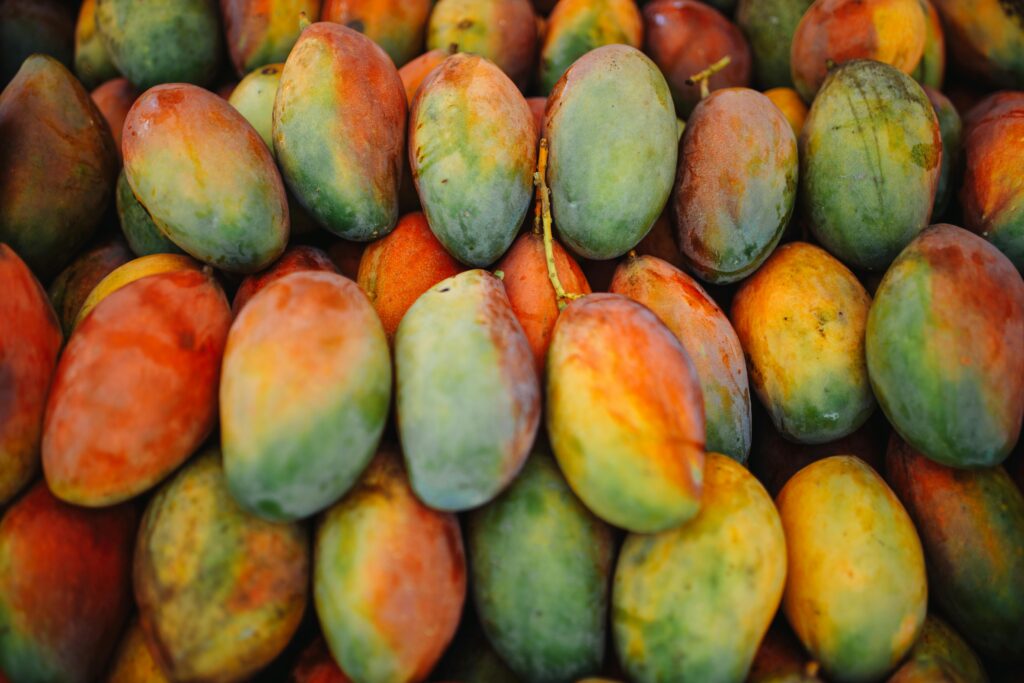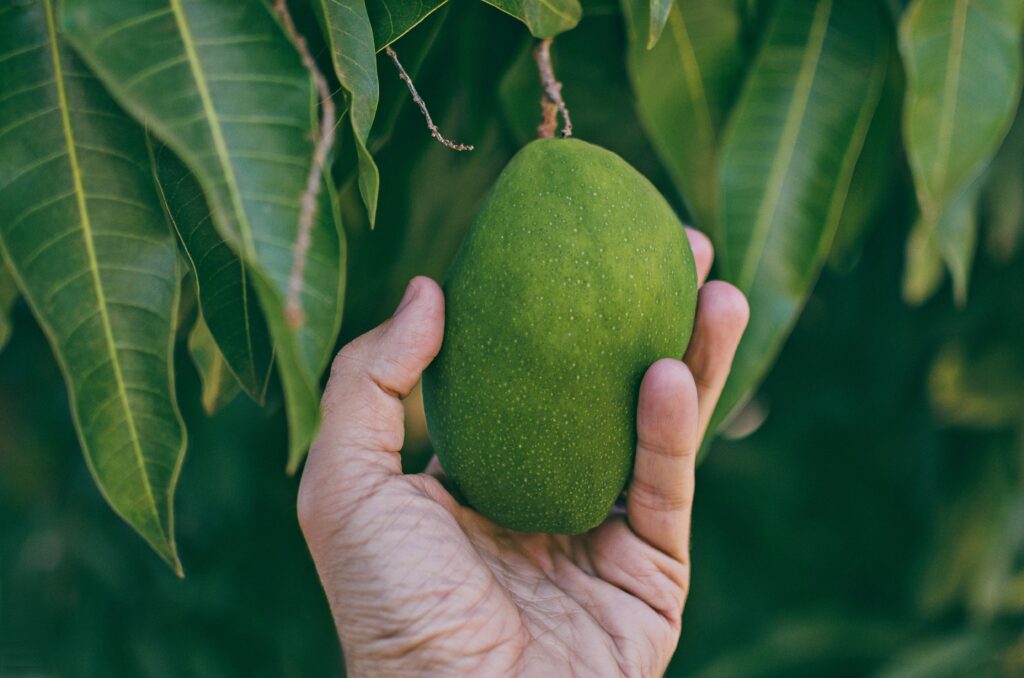Table of Contents
ToggleExport of Mango from India: A Global Delight
Preface
India, renowned for its rich agricultural heritage, plays a significant role in the global fruit export market. Among its diverse range of fruits, mango holds a unique position due to its distinct flavor and various applications. Mango, often referred to as the “King of Fruits,” is widely used in culinary, medicinal, and cosmetic products. The growing global demand for natural and exotic fruits has made the export of mango from India a promising business opportunity. This blog explores the potential, export process, challenges, and future prospects of mango export from India.
Mango: An Overview
Mango (Mangifera indica) is a tropical fruit known for its sweet, rich flavor and juicy texture. It is a popular ingredient in global cuisine, consumed fresh or processed into products like mango pulp, dried mango, and mango juice. Beyond its culinary uses, mango is also valued for its digestive properties, antioxidants, and vitamin-rich content, making it a sought-after product in the health and wellness industry.

Types of Mango Produced in India
India produces a wide variety of mangoes, each with its unique taste, texture, and aroma. Some of the most popular types of mangoes produced in India include:
Alphonso (Hapus): Known for its rich flavor, vibrant color, and creamy texture, primarily produced in Maharashtra and Gujarat.
Dasheri: Sweet and aromatic variety grown in Uttar Pradesh.
Langra: Famous for its green skin and unique taste, produced in Uttar Pradesh and Bihar.
Kesar: Renowned for its saffron-like color and aroma, primarily cultivated in Gujarat.
Totapuri: Slightly tangy mango used in pulp production, grown in Karnataka, Andhra Pradesh, and Tamil Nadu.
Banganapalli: Popular for its firm flesh and sweet taste, widely grown in Andhra Pradesh.
Chausa: Sweet and juicy variety produced in northern India.
Himsagar: Aromatic and fiberless mango grown in West Bengal.
These diverse varieties contribute to India’s dominance in the global mango market, catering to different consumer preferences across the world.
India’s Role in Mango Production
India is one of the largest producers of mangoes in the world, contributing significantly to the production of mango-based products. The major mango-producing states in India include:
Uttar Pradesh
Andhra Pradesh
Maharashtra
Karnataka
Gujarat
Tamil Nadu
Mango production is especially prevalent in northern and western regions, where traditional methods are used to ensure high quality. The rich flavor and aroma of Indian mangoes make them highly competitive in the international market.
Global Demand for Mango
The demand for mango is on the rise globally, driven by increasing awareness of natural and organic products. Major importing countries of Indian mango include:
United States
United Kingdom
Canada
Australia
United Arab Emirates
Germany
The growing preference for exotic fruits and the rising popularity of Indian produce have significantly boosted the global demand for mango. Additionally, its health benefits and applications in the pharmaceutical and cosmetic industries further enhance its market potential.
HS Code and Product Category
Mango is classified under the Harmonized System (HS) code 08045020 for export purposes. It falls under the broader category of Edible Fruits and Nuts within the global trade classification system. This classification facilitates customs clearance, tariff determination, and statistical documentation, simplifying trade procedures for exporters and importers.

Export Process of Mango from India
Exporting mango from India involves several crucial steps:
1. Registration and Documentation
Obtain an Importer Exporter Code (IEC) from the Directorate General of Foreign Trade (DGFT).
Register with the Agricultural and Processed Food Products Export Development Authority (APEDA).
Comply with Food Safety and Standards Authority of India (FSSAI) regulations.
2. Quality Standards and Certification
Ensure the product meets international quality standards.
Obtain certifications such as ISO, HACCP, and organic certifications if applicable.
3. Packaging and Labeling
Use moisture-resistant, food-grade packaging materials.
Provide accurate labeling, including batch number, expiry date, country of origin, and certifications.
4. Logistics and Shipping
Choose the appropriate mode of transportation (air or sea freight).
Collaborate with reliable logistics partners.
Complete necessary export documentation, including the bill of lading, commercial invoice, and certificate of origin.
Challenges in Mango Export
Despite its promising potential, mango export from India faces several challenges:
Quality Control: Maintaining consistent quality and meeting international standards.
Price Fluctuations: Unpredictable market prices due to climatic conditions and global demand.
Regulatory Compliance: Adhering to different quality regulations in various countries.
Competition: Rising competition from other mango-producing countries.
Logistics: High transportation costs and shipping delays.
Government Initiatives and Support
The Indian government, in collaboration with APEDA, actively promotes mango exports through various initiatives:
Financial assistance for quality improvement and certification.
Organizing trade fairs and buyer-seller meets.
Providing market intelligence and export guidelines.
Facilitating participation in international exhibitions.
Future Prospects
The future of mango export from India looks promising, driven by:
Increasing demand for natural and organic products.
Rising popularity of exotic fruits.
Expansion of the global food and beverage industry.
Government support for fruit exports.
Innovations in value-added products like mango pulp, dried mango, and mango beverages.
Conclusion
The export of mango from India presents a lucrative opportunity for businesses and farmers. With the right quality standards, certifications, and strategic marketing, Indian mango can carve a prominent niche in the global fruit market. Addressing challenges related to quality control, regulatory compliance, and logistics will be crucial for sustained growth. As the world increasingly embraces natural and health-enhancing products, Indian mango is well-positioned to become a global culinary delight.
